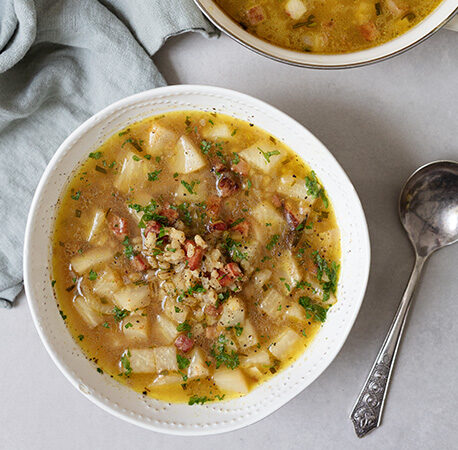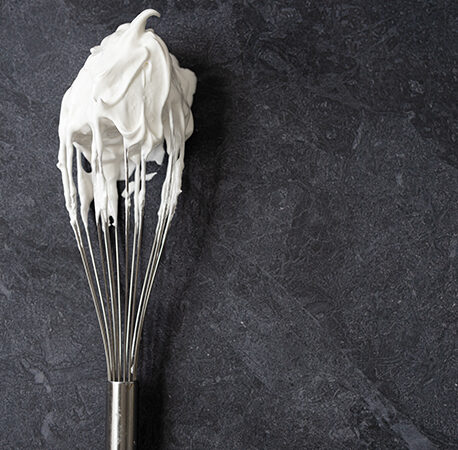I am guilty of having a sweet tooth and am a self-proclaimed sugar addict. There are many reasons to use sugar substitutes, whether you’re looking to avoid the dreaded sugar crash, make healthier alternatives of your favourite baked goods or even to explore new flavours. Unfortunately, sugars can’t simply be replaced in equal measures with alternative sweeteners; baking is a science and the balance of ingredients is essential. While sugar adds sweetness to bakes, this is not its only purpose.
In baking, sugar…
• Retains moisture and extends the shelf life of the finished product.
• Tenderises the texture of a cake.
• Promotes the growth of yeast in breads, helping them to rise.
• Is used as a raising agent when beaten with eggs or fat.
• Caramelises breads, cakes and other bakes, giving them a golden colour.
While sugar plays many important roles, there are some alternatives that are well worth exploring:
Honey honey
The bees have literally worked their butts off to make this delicious, naturally sweet liquid. Honey is made from flower nectar combined with an enzyme secreted by bees; it is then concentrated by reducing the moisture in the honeycomb. Honey works well in dense bakes such as quick breads, moist cakes or ice creams. Honey is made of about 20% water, so you will need to reduce the amount of liquid required in the recipe by about 2-4 tablespoons. The use of honey in cakes that require creaming (the beating of butter and sugar together) will not work; when beaten with butter, sugar cuts through the fat, creating air pockets that expand when heated. Honey cannot create these air pockets, which results in a denser finished texture. Melted honey makes a lovely glaze for cakes, giving them shine and flavour.
Maple madness
Maple syrup is an unrefined natural sweetener made from the sap of a maple tree and is high in antioxidants. It has similar properties to honey in baking as it will not work in recipes that require creaming. It is best used for caramels, ice creams, puddings and icings. Mixing avocado, cocoa powder and maple syrup makes a delicious mousse-like icing for cakes. Maple syrup is sweeter than sugar, so less is required in a recipe. The use of maple syrup will give a sweet caramel flavour to the bake and makes a nice glaze for bakes. If you wish to replace honey in a recipe for maple syrup, it is a simple 1:1 swap. Bear in mind, though, that maple syrup can sometimes be more expensive than honey.
Loco for coconut sugar
Coconut sugar is a natural sugar obtained by heating the sap of the coconut flower until most of the liquid has been evaporated. Coconut sugar has a low glycaemic range, meaning you will not have a sugar spike and fall. It does not have a coconut flavour and is very similar to brown sugar, making it quite versatile. Coconut sugar can be a 1:1 substitute for white or brown sugar in recipes, however it is slightly more coarse. It is best used in biscuits or in recipes that use chocolate or warm spices. When using a recipe that requires creaming the butter and sugar, the use of coconut sugar can result in a speckled appearance and your bake may appear more porous. If the recipe uses melted butter, milk, oil, yoghurt or other liquids, allow the coconut sugar to dissolve for about five minutes first before blending. This will result in a smoother texture.
Stevia
Stevia is a sweet, natural plant extract from the leaves on the stevia plant. Stevia can be purchased in crystallised, powdered or liquid form. It is much sweeter than sugar so a little goes a long way, and it also contains no calories…WINNING! Stevia works well in fruit desserts, ice creams or jams. Because it is sweeter, it is not a direct substitute for sugar; two tablespoons of stevia powder is the same as one cup (roughly 200g) of sugar. The liquid and powdered forms are the best to use in baked goods. It is important to know that stevia does not caramelise as well as some of the other substitutes.
Getting Fruity
Fruit is packed with natural sugars and will add sweetness and flavour. Using puréed fruits, mashed bananas or fruit juice is a wholesome way to add sweetness and texture to your bake. The added fruit should complement the other ingredients in the bake, such as adding pineapple or orange juice to a carrot cake. Dried fruit is also a great way to add some bite to any bake. The use of a fruit purée or juice will make a wet batter, so it would not be a 1:1 replacement for sugar. Working with fruit is trial and error; sometimes more fat, flour or eggs are required to get the consistency right.
A top tip would be to invest in a simple set of measuring cups, as these make it easier to convert weights in many recipes. Measuring cups can be found in kitchen supply shops or some supermarkets and they cost very little.
There are many other sugar alternatives such as molasses, agave or brown rice syrup that can be found in health food shops and although I’m still a devotee to sugar in baking, I was impressed by some of these alternatives and their natural sweetness.
- summer events
- small business
- gut health
- OATLY
- healthy
- Crudo
- top tips
- All Together Now
- fridge cake
- Events Waterford
- me auld flower
- Events Ireland
- food festival
- news
- dublin
- events Dublin
- dublin festival
- Home-Cooking
- food and drink festival
- online cooking course
- festival line-up
- cooking
- Summer festival
- eco-friendly
- Events
- cosy
- Festivals Ireland
- wine
- Body & Soul
- grapes
- music festival
- south africa






You have to be signed in to comment this post.